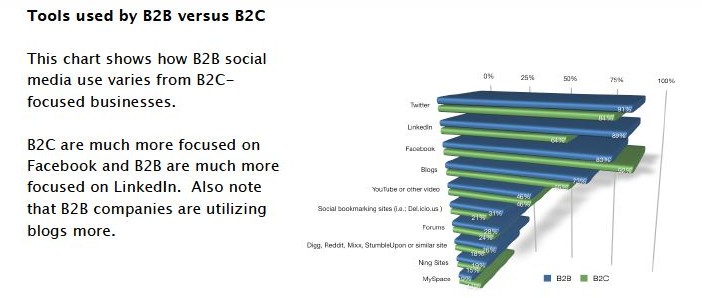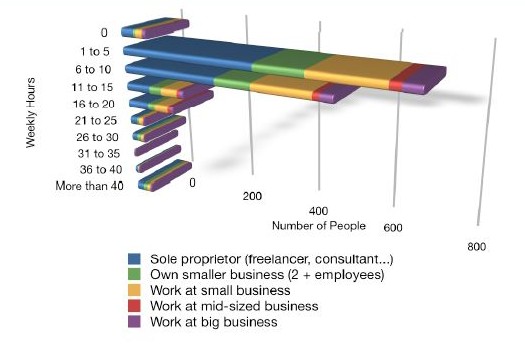
 Many companies are reporting to be increasing their social media spending in the upcoming year. What you might be curious to know is what type of companies are primarily behind the cash flow. Instead of getting too deep into the nitty gritty of industry breakdowns, let’s stick to the classic matchup of B2B vs. B2C. There are already quite a few papers which contrast B2B and B2C performance in social media with findings showing that B2B companies use social media tools more than B2C companies. Surprised?
Many companies are reporting to be increasing their social media spending in the upcoming year. What you might be curious to know is what type of companies are primarily behind the cash flow. Instead of getting too deep into the nitty gritty of industry breakdowns, let’s stick to the classic matchup of B2B vs. B2C. There are already quite a few papers which contrast B2B and B2C performance in social media with findings showing that B2B companies use social media tools more than B2C companies. Surprised?

The graph below shows that smaller companies are more likely to use social media than larger ones. Generally speaking, small companies, especially freelancers (the largest group using SM) are by and large B2B type operations. To be profitable in a B2C world requires high volume, which in turn requires lots of man power, i.e. large companies.

For a one-man-show type company, social media offers a grand opportunity, finally affording the small time operator the ability for mass market exposure with no more cost involved than the time invested in learning how to utilize the tools effectively. Compare that to the entrenched nature of large corporations with equally large budgets, and it’s no wonder that the scrappy and flexible small businesses have embraced social media far faster, and more wholeheartedly than their larger counterparts (while there are exceptions, the numbers speak for the norm).
Unfortunately, large companies usually need a wakeup call in the form of a disgruntled market base before they start to realize that maybe they should be paying more attention to the socialscape. Why not learn from smaller businesses and utilize social media for things other than mere damage control?
The truth is larger companies are slowly starting to embrace social media and this trend will probably begin to snowball at some point in the near future. How much opportunity is there for B2Cs in social media?
The answer: A lot.
Most of the social profiles are as equally geared toward B2C as they are to B2B, if not more so:
- Facebook- I already mentioned that Facebook is more heavily geared toward B2C.
- YouTube- B2C companies should definitely be jumping on the YouTube train, especially after the success that OldSpice and Lionsgate Films have achieved through their efforts to connect to the public in this way.
- Twitter- This should be a no brainer. Twitter is an excellent way for companies to disseminate information and develop a relationship with their market base. However, big companies should be sure to learn the etiquette of social media to avoid being labeled as spammers.
- LinkedIn- LinkedIn is clearly geared toward B2B, but clever companies might be able to capitalize on this fact. There are many industries which are B2C but have a B2B type feel, like trading stocks or Forex, both of which are heavily represented in LinkedIn groups. Clothing retailers could for example instigate discussions about “dressing for success” on this network. LinkedIn groups love to throw in their two cents on lighter business culture issues as well, taking a break for a change from the otherwise “drier” side of mainstream business topics. This is far from a ready-to-go campaign strategy, but the point is clear – even LinkedIn has much to offer B2C.
These days both B2C and B2B companies can enjoy different channels of direct dialogue with their customers and potential customers like never before. Whether you’re a B2B company or a B2C company, you need to decide which social networks are best for your brand and nurture these communities like you would any customer base. The sky is the limit as far as what you can do on these networks. It’s your turn to shine and grow your business utilizing the most cutting edge social media tools available.
Get the TNW newsletter
Get the most important tech news in your inbox each week.




